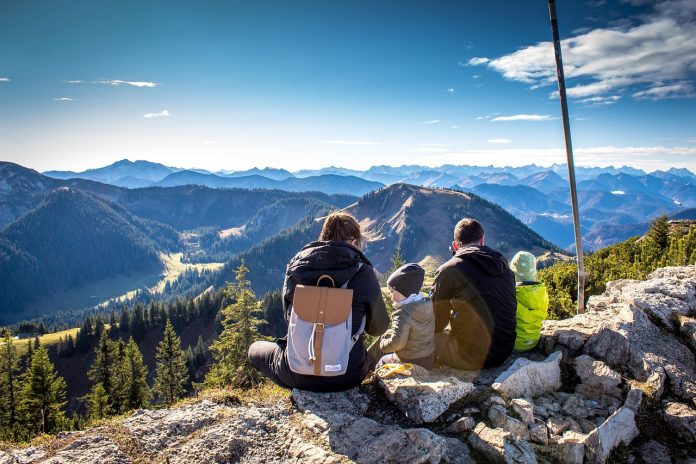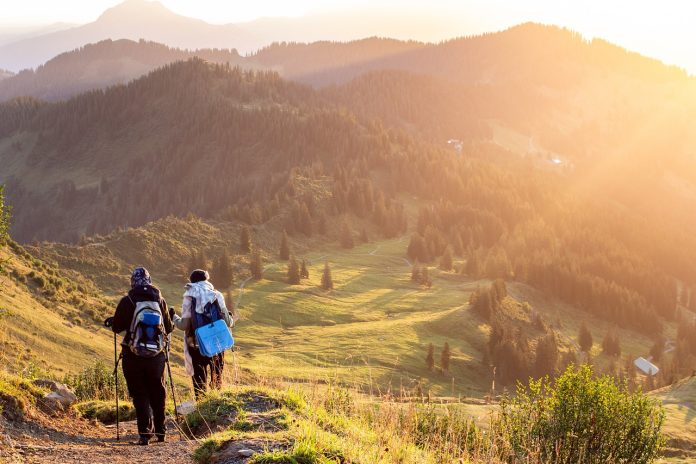Hiking with kids and family can create priceless memories in the great outdoors. However, hiking with young children requires additional preparations and considerations for an enjoyable experience. This guide covers everything parents and caregivers should know when planning a family hike, from choosing age-appropriate trails to packing essential gear and safety items. Follow these tips to make your outdoor adventures fun, engaging, and safe for the whole crew.
You may also want to know: How to start hiking
Table of Contents
Benefits of Hiking as a Family
First, what draws families to hit the hiking trails together? Some top reasons include:
- Quality time together away from technology and daily stresses. Bond with children and reconnect.
- Share appreciation of nature. Foster respect for the environment at a young age.
- Increased fitness and health benefits from being active outdoors. Model healthy lifestyles.
- New adventures that create lasting memories. Explore the world as a family unit.
- Learn new skills together like navigation, first aid, birding, or plant identification.
- Affordable activity with many free local hiking options. Gets kids outdoors versus indoors.
- Escape the confines of the city to places of wonder and exploration. Discover amazing new places.
Hiking as a family lets kids burn off energy while parents find a sense of peace. The whole family sleeps better after a day of fresh air too! Adjust the pace and activities to every family member’s ability to ensure a rewarding experience for all.
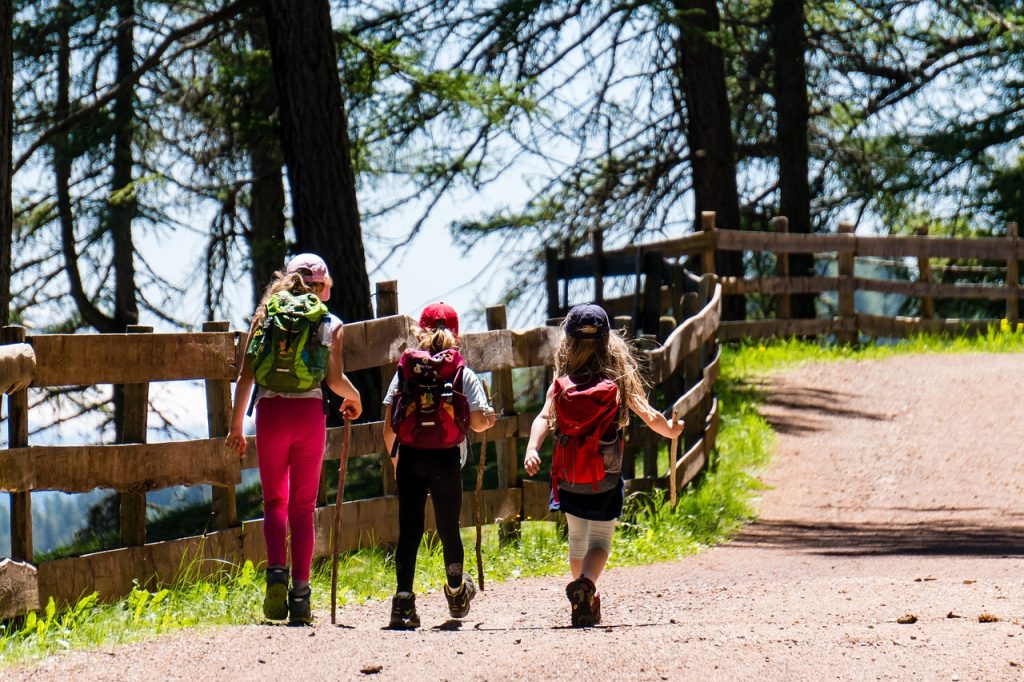
Choosing a Trail Suited to Your Family’s Needs
To set your family hike up for success, carefully select a trail that matches ages and fitness levels. Consider the following:
- Distance – Keep mileage under 2 miles for very young kids. Build up as they get older and condition.
- Elevation gain – Gentle and gradual is better than steep ascents and descents. Adjust for ages and fitness.
- Terrain – Stick to clear dirt paths without roots and rocks with new hikers. Avoid scrambling.
- Accessibility – Find trails with parking, bathrooms, and drinking water when possible for convenience.
- Kid-friendly features – Look for interactive elements like ponds to spot frogs, big boulders to climb, or viewpoints to wow.
- Location – Save very remote trails for when kids are older. Start with popular parks close to home.
Scout the trail in advance using AllTrails data on distance, elevation profile and reviews. Ask park staff about any family-friendly routes too. Plan hikes earlier in the day before little ones get tired or grumpy.
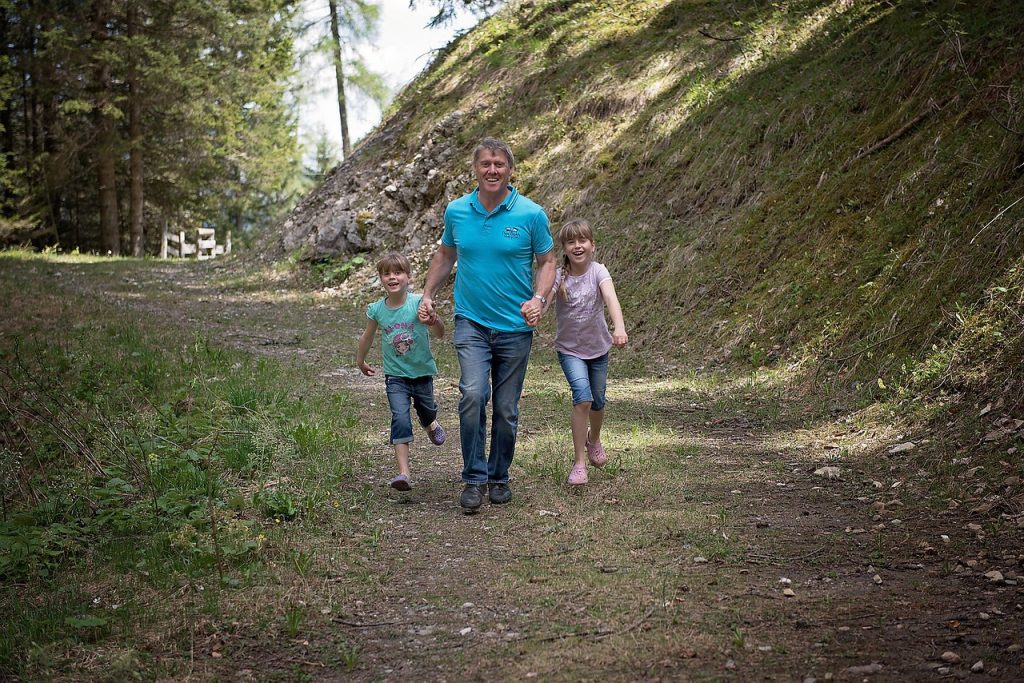
Packing Essentials for Family Hiking
Being well-prepared and equipped ensures a fun and safe family hiking experience. Pack these essentials:
- First aid kit – Include bandages, gauze pads, medical tape, antiseptic wipes, blister kit, antacids, and any personal medications needed.
- Sun protection – Broad spectrum sunscreen, wide-brimmed hats, sunglasses, and protective clothing help prevent burns.
- Insect repellent – Sprays, wipes, and bracelets keep the bugs away. Avoid spraying the face, instead wipe the skin.
- Emergency blanket – Reflective foil blankets conserve body heat in case anyone gets cold or wet.
- Whistle – Useful for summoning help if you become lost or injured. Teach kids how and when to use it properly.
- Headlamp or flashlight – Illuminates trail should you end up hiking back after dark. Extra batteries.
- Multi-tool or pocket knife – Helpful for basic repairs and cutting rope, tape, and bandages as needed.
- Firestarter – Allows building emergency fires for warmth or signaling if forced to overnight.
- Extra food and water – Hungry, thirsty kids burn through supplies! Always pack surplus.
- Navigation – Physical map, compass, GPS and charged cell phone to avoid getting lost.
With young kids, also bring kid carriers, collapsible wagons, or hiking backpacks with reservoirs and snacks to keep them content on long walks. Distribute weight evenly if possible.
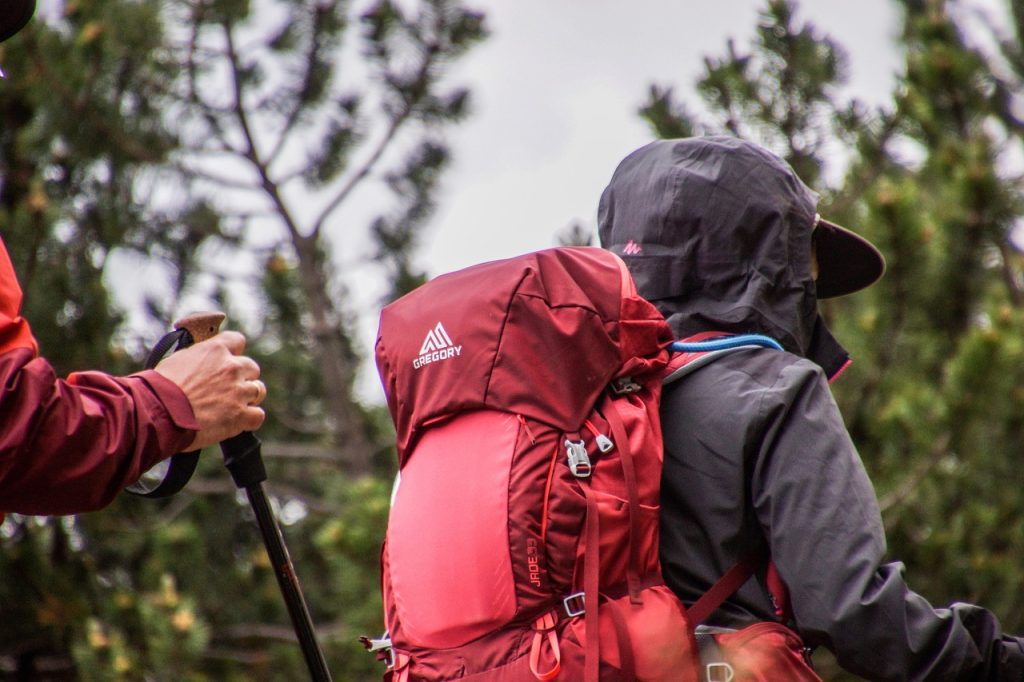
Creating Fun and Learning for Kids on the Trail
Beyond scenic views, keep the kids engaged with these tips:
- Let them set the pace so they don’t get too tired. Stop often for snacks, water, and restroom breaks to recharge.
- Play trail games like I-Spy, alphabet scavenger hunt, or storytelling. Alternatively, chat about plants and animals.
- Give them toys like pocket magnifying glasses to inspect insects or sticks to swing and play with.
- Make it educational by teaching about footprints, animal signs, and basic hiking/safety skills. Have them practice with a kid compass.
- Let older kids take the lead for portions to build confidence. Constantly coach on etiquette. Praise their involvement.
- For long uphill treks, employ creative rewards like the first one to the top gets the prize of a snack or story.
- When their interest wanes, add energy and enthusiasm yourself. Refocus attention on something new up ahead to discover.
Building healthy outdoor habits young creates a life-long appreciation of nature. Adjust the activities to suit each child’s age and abilities.
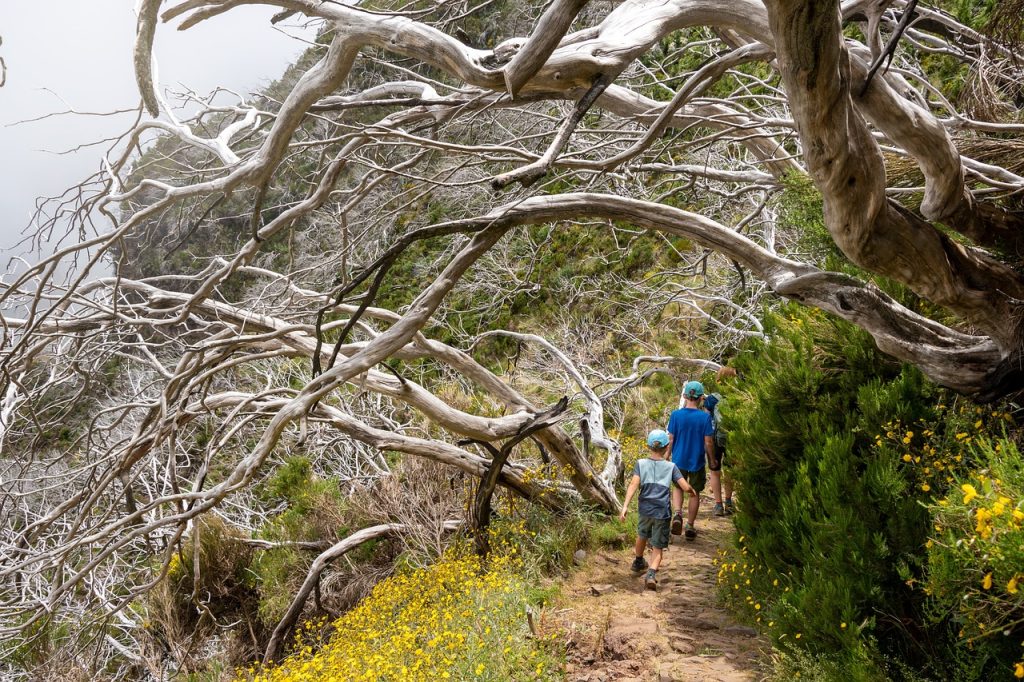
Family Hiking Safety Tips
While recreating as a family, be sure to emphasize safety:
- Set ground rules and expectations for behavior before heading out. Teach kids to stay on the trail and be aware. Have them wear whistles.
- Get young ones suited with sturdy hiking shoes so they don’t trip on rocks or roots. Break them in beforehand.
- Have kids wear natural fabrics that wick moisture as cotton absorbs sweat. Dress in layers for changing weather.
- Pack child-sized daypacks they can carry themselves, filled with their water, snacks, and rain/wind shell. Engage them.
- Screen kids for tick bites after hikes. Check yourself as well. Safely remove any found ticks.
- Watch for signs of heat exhaustion like heavy sweating or nausea. Turn back or cool down immediately if suspected. Rest and hydrate.
- In bear country, avoid surprise encounters by being noisy and hiking in groups. Understand proper bear safety.
- During extreme weather like electrical storms, flash floods, or high winds, postpone the hike. Thunder = go indoors.
- If lost, STOP (Sit, Think, Observe, Plan). Teach kids this mantra! Stay put, then signal rescuers with a whistle.
Appoint a parent “sweep” to remain behind kids so nobody lags behind or gets lost. Periodically do headcounts after stopping. Stress the buddy system if they roam or climb. Updates first aid skills and know signs of medical emergencies.
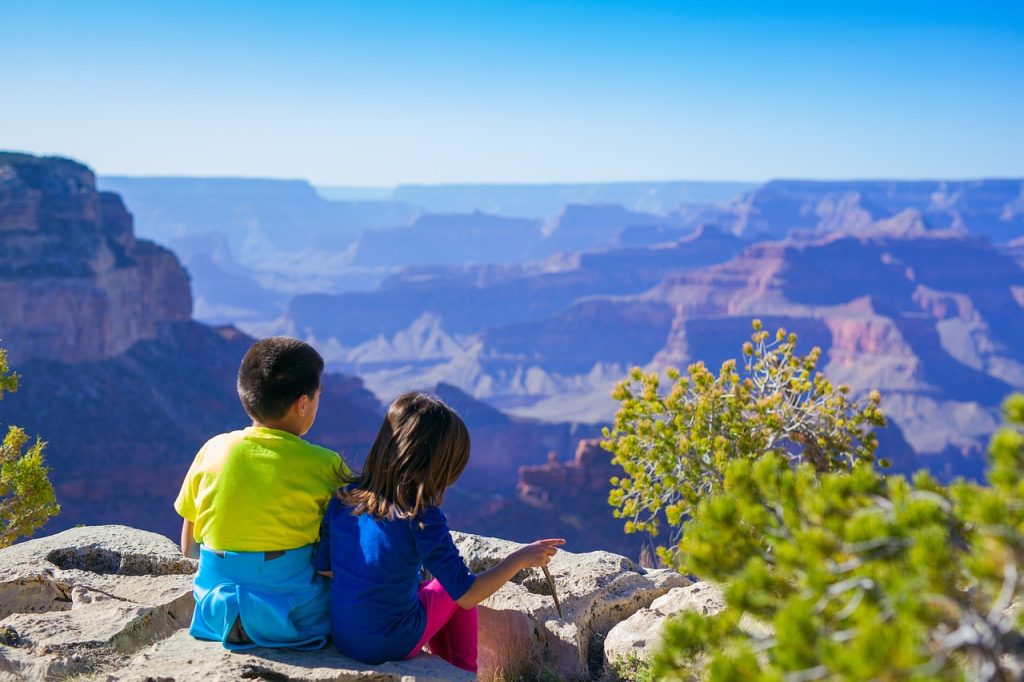
The Family Hiking Experience
Create a positive hiking atmosphere with realistic expectations based on ages and abilities. Let the kids assist with route decisions. Embrace their sense of wonder by exploring side areas together. Most importantly, maintain upbeat spirits and humor even if the day doesn’t go perfectly as planned! There is no better classroom than the outdoors, so nurture their curiosity through teachable moments. The memories made will far outshine any temporary challenges.
In summary, hiking with family requires some additional planning but pays huge dividends in terms of togetherness, health, and appreciation of nature. Start on easy, short adventures close to home and expand your horizons from there. Pack properly, anticipate needs, get kids involved, keep it fun, and make safety paramount. Spending active time together outdoors builds bonds and establishes rewarding traditions that will be valued for a lifetime. Let the adventures begin!
Related Links:


